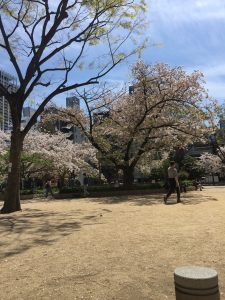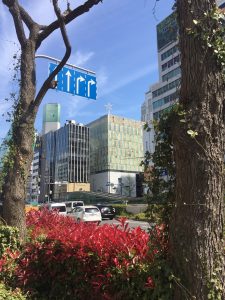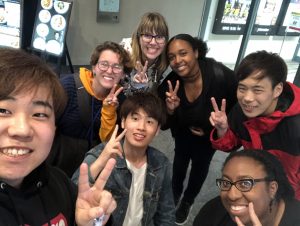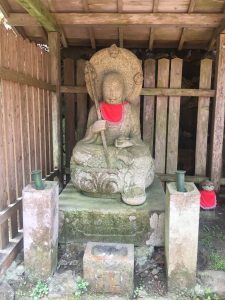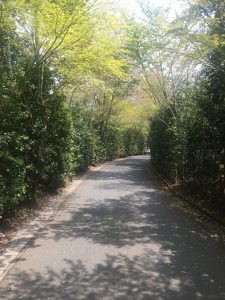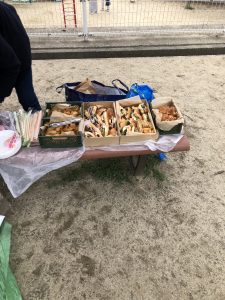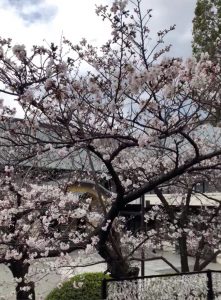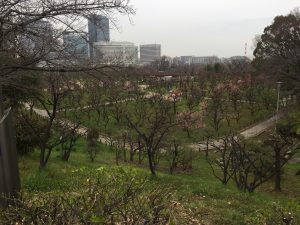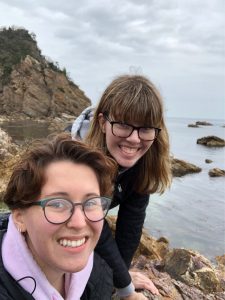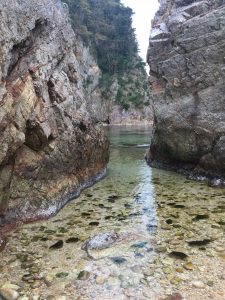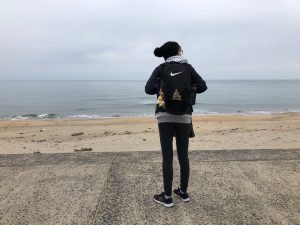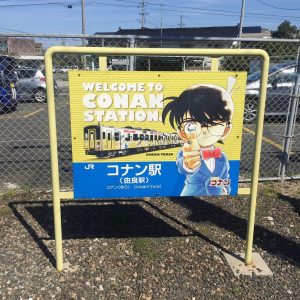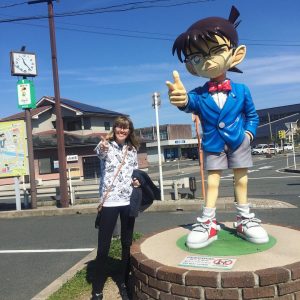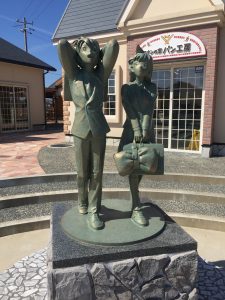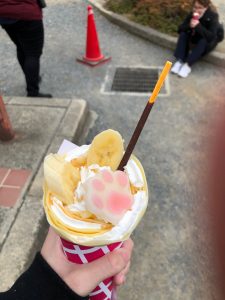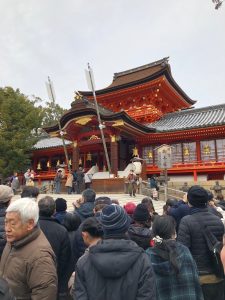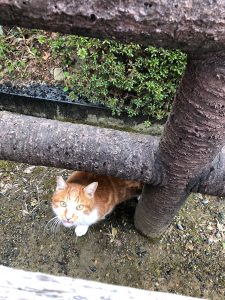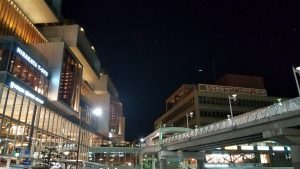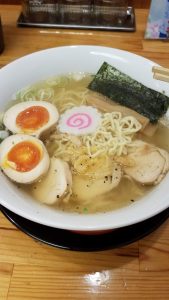Author: Olivia Dausch
Location: Japan
Pronouns: They/Them
I had a lot of ideas for my final blog post. I decided on listing things I think would be beneficial for incoming international students. Some of these are things I wish I knew, and others are things I learned.
– Get a Speaking Partner
I was reluctant to get one at first, but having a speaking partner is definitely one of the best decisions I’ve made here. I was able to practice speaking Japanese regularly and I eventually got more confident in what I knew.
– Sign up for an Experience Japan event
Another fortunate decision I made early on was signing up for one of these events. The events might be different in the spring semester, but they should also be very enjoyable. You get to meet local and international students and have a fun day with them.
– Budget appropriately
One thing that definitely would have helped in the long run was budgeting my money. Since Valpo has an agreement with Kansai Gaidai, you are given around $2,000. Set aside whatever money you think you need for your whole trip and commit to using it only for groceries. That will still leave a lot for doing any travelling you would need. A lot of my friends were able to take trips to Tokyo and are still fine money-wise.
Also, one thing to be aware of is ATMs. If you want to take money out of your American bank account, unless you go to Aeon Mall, you will have to take out your money in $100 increments. At Aeon, it’s only $10 increments. Also, if you have Chase, there is a $5 fee for using a non-Chase ATM, as well as a conversion rate fee, which is usually less than a dollar. I don’t know if this applies for other banks but be careful.
– Carry cash
Japan is primarily a cash-based society. There are a lot of places that flat-out don’t accept card. Make it a habit to carry cash and you’ll be fine. Coins are substantial here, too. It will be a bit difficult to adjust, since America’s largest common coin is a quarter. The largest coin here is equivalent to $5, and the first bill starts at $10. Try to avoid spending bills first.
– Dress appropriately
Not only is there a different social standard for dress, as would be expected, but the weather is considerably warmer than at Valpo. It is the middle of December now and it has only gone below 40 degrees once or twice. Don’t hesitate to go shopping for clothes while you’re here, too. Be mindful of sizes, but most places have fitting rooms so you can see what works best for you. Generally, avoid low- cut shirts and dresses and you’ll be fine.
A lot of people here wear layers, regardless of the weather. Seeing someone, regardless of gender, wearing a cardigan, long sleeve shirt, beanie, and jeans is incredibly common, especially now that it’s colder. Keep an eye out for clothes you like. It’s hard to find something similar in America.
– Try new things
You’re in another country, so try to take it in as much as you can. You wouldn’t go to Italy for burgers and fries, right? Japan has a lot of foods that America simply doesn’t, so indulge in it. I was hesitant to try the different kinds of onigiri, and I usually picked either salmon or beef, which are on the more expensive side. I tried tuna mayonnaise on a whim, and it was honestly a surprisingly good choice. Mayonnaise is different here in Japan, so give it a try.
Also, convenience store food is definitely the best choice when you’re in a rush. Nothing is more than $5, and it’s usually not hard to find a favorite. It’s easy to pick up onigiri or bread up before class but be careful not to walk and eat. It’s generally frowned upon here.
– Lunch Break
Lunch break here is like Chapel Break at Valpo. The only difference is that everyone is free for an hour, so trying to get food is going to take a lot longer than usual no matter where you go. Avoid the cafeterias on both campuses, since everything is extremely crowded, and you might have to eat outside. Try getting your food before or after break or cook in the kitchen in the dorm.
– Go to class
I think this should be obvious but go to class. Kansai Gaidai has a lot of different classes than Valpo and it’s definitely worth it to see what they have in store. Classes here are 90 minutes long, but it goes fast if you’re interested in the topic. There are a lot of fun classes here, so it’s a bit hard to completely be bored.
Also, all Japanese classes are held in first period(9:00am) or second period (10:45) three days out of the week. I’m in 4a now, so my class is at 9:00 on Mondays and Fridays and at 10:45 on Tuesdays. Usually, none of the other classes are held during those times, but there are exceptions.
Classes are generally a lot easier here. I’m taking four classes (around 14 credits) and I only regularly have homework in one. For two, I write a response to whatever we read or watch, and the other is just readings. If you’re going to stay for two semesters, grades are especially important. If you fail a class, you won’t be able to stay for the second semester.
– Learn what you want
When learning a foreign language, one of the best ways to learn is to find something you want to say and learn how to say it. You will learn vocabulary, grammar, and sentence structure while doing it, and you’re able to say what you want. There’s almost no downside and it works for any language.
– Download LINE
LINE is a messenger app that’s really popular here. If people ask for your contact info, they usually ask for Facebook, Instagram, or LINE. It’s not a necessity, but I recommend it.
– Be prepared to walk (or bike) everywhere
In Japan, it’s usually not necessary to own a car. The station is about 15 minutes away walking and Nakamiya is about the same. There are a lot of rules around riding bikes, so I prefer walking. Either one you choose, be prepared to walk a lot.
– Be a little more outgoing
Especially if you’re a more reserved person, step out of your shell a bit. Take the chance to meet international friends. It’s going to be disappointing coming back to America and not being able to talk to anyone you met abroad.
Orientation week is the best time to form a group of friends, so take advantage of it. Once local students start classes and you start attending events, it will definitely be difficult to leave without at least one friend.
– Get an IC card
IC cards are basically train passes. They can be used all over Japan. If you’ve been in Chicago, it’s basically the same as the train passes there. It’s a reloadable card that functions as a train ticket. In Japan, these cards are used for even more as well. Some restaurants take them as payment and even some vending machines take them. They’re incredibly useful.
– Go wherever you can, but be safe
You’re not going to have a lot of fun if you just stick around Hirakata your whole time here. It’s incredibly easy to travel in Japan, so take advantage of it. Through the school alone, I was able to go to Kyoto, Nara, and Osaka. There are so many cool places a train ride away. You can even take a trip to another country. One of my classmates went to Thailand early in the semester.
Whatever you decide to do, be safe about it. Try to travel with someone. Japan may be one of the safest countries in the world, but things can still happen. Even if you just get lost, it’s easier to be lost with someone else. When my friend and I got lost in Osaka trying to find a music store, it was a lot easier to find our way with a barely-functioning Google Maps together than it would have alone. And, if nothing happens, you were able to hang out with a friend.
Going to Japan is going to be an amazing experience for you. Make the most of it and have a great time. Don’t forget to check in sometimes, but don’t worry about doing it constantly. Also, don’t forget to take pictures. There’s no better way to remember all the fun you had.
